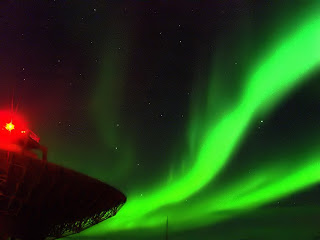The phased array concept is central to the LOFAR project. Phased arrays were developed by the German physicist Karl Ferdinand Braun in 1905. During the Second World War, they were used for radars, first by the Luftwaffe and then later by the US Air Force. After the war, they were introduced into radio astronomy, in particular by Sir Martin Ryle’s group at Cambridge. These days their use is quite common and they can be found in many radio applications.
Like a regular dish, they also rely on adding signals together. But the technique is different.
In a phased array, there is not just one detector, but several. Each can receive radio waves from all directions (well, if not all, then at least a very wide range of them).
Unlike the reflecting dish, which uses the physical travel of the incoming radio waves to get them to arrive in phase when they come from a certain direction, phased arrays don’t care when the signal gets to the detector.
They delay the electrical signal, instead.
The simplest way to do this is simply by adjusting the cable length. If you consider a two-element phased array, with identical cables, then you can see that a signal coming in from overhead will be detected at the same time, travel the same distance and thus add in phase, resulting in a strong signal.

At a certain angle away from directly overhead, the arrival times will vary by half a wavelength, so the electrical signals are completely out-of-phase when they add, and thus cancel each other out.

So this simple array is sensitive to signals coming from the zenith, but not to those coming from slightly off-zenith. In other words, this phased array has sensitivity in a particular direction.
Doesn’t seem particularly useful so far, but there’s a neat trick you can then do. And we’ll reveal what it is in the next episode!










































